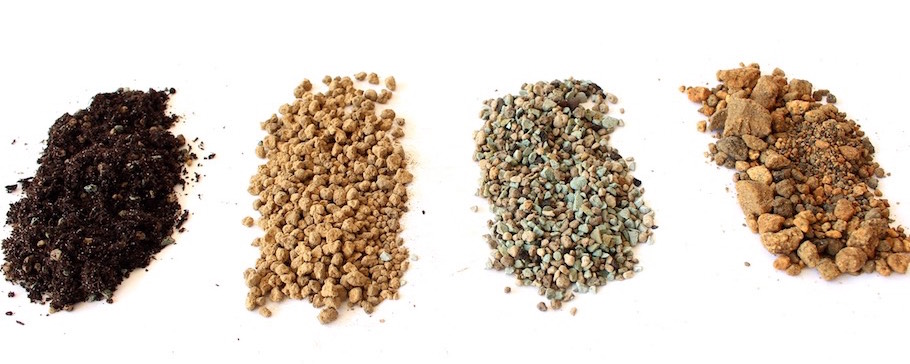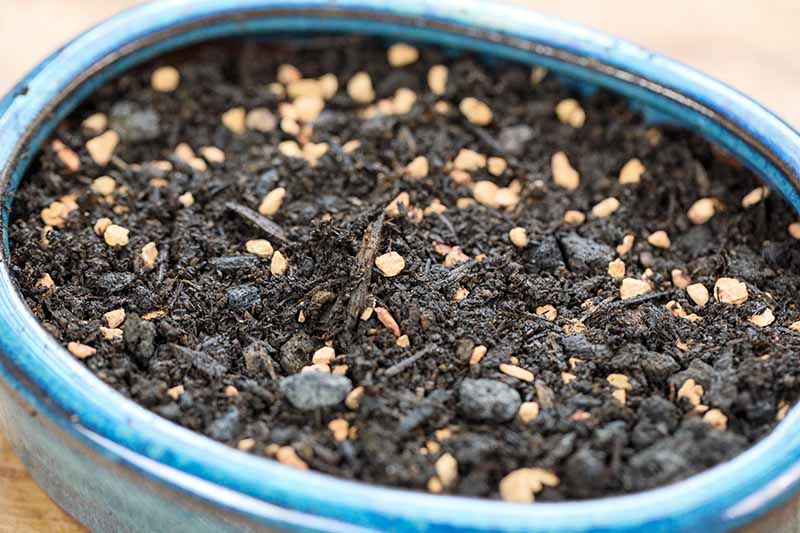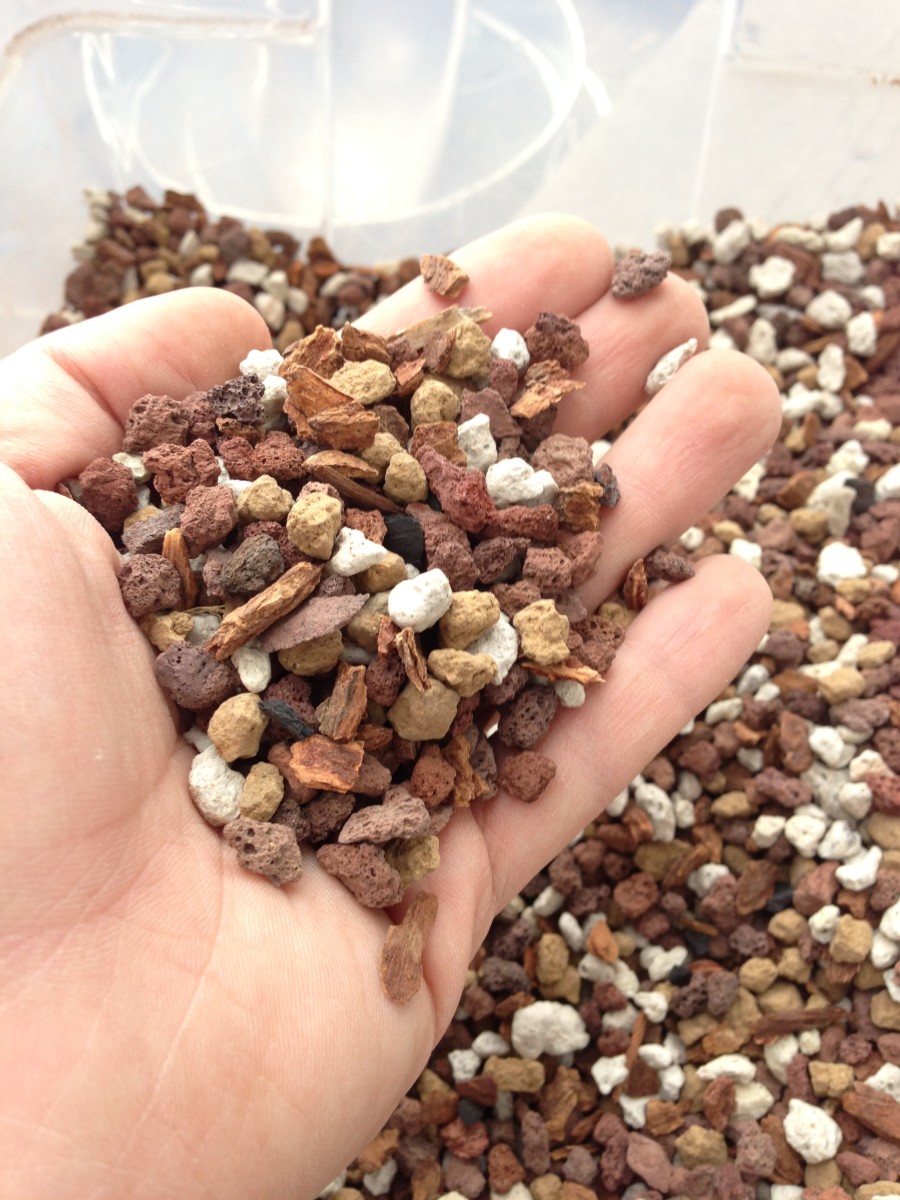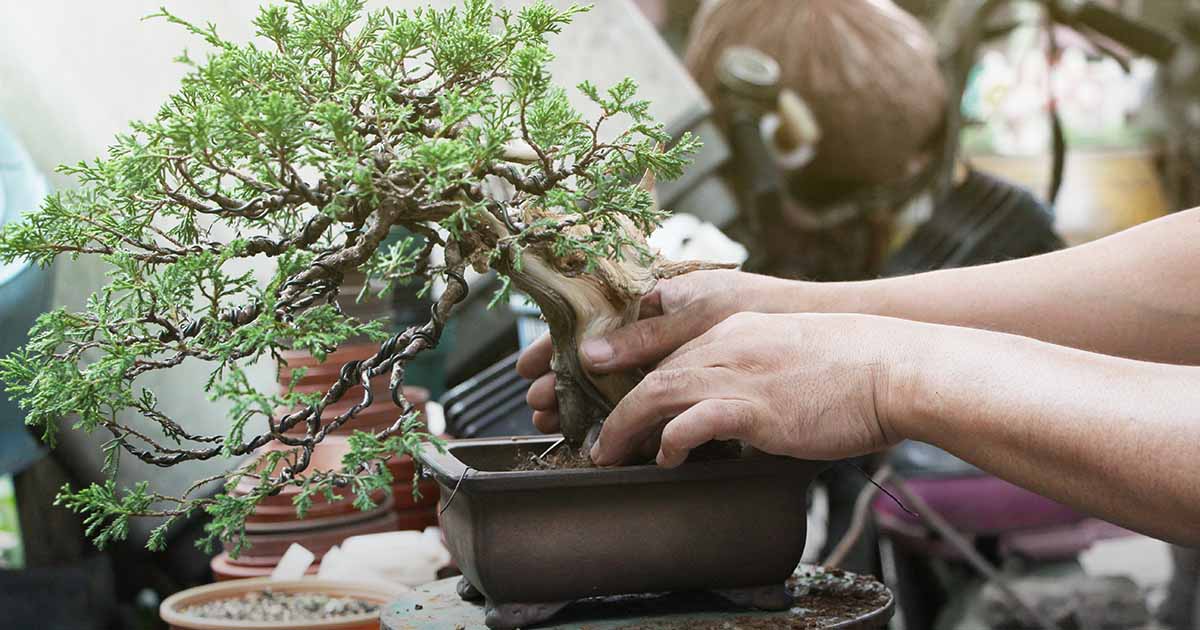In the following paragraphs, we will take a look at the differing types of soil and substrates used in bonsai cultivation, like natural and inorganic alternatives.
We'll also discover recommended soil mixtures for many bonsai species, which include deciduous, coniferous, and indoor kinds. From akadama and pumice to moss and river sand, we will dive in to the fascinating environment of bonsai soil and assist you realize why It is an essential A part of cultivating these exquisite trees.

Bonsai soil
What is bonsai soil?
Bonsai soil is a specialized type of soil that is specifically formulated for growing and maintaining bonsai trees. Unlike regular garden soil, bonsai soil is well-draining and provides the necessary nutrients and moisture balance for the tree's root system. The composition of bonsai soil is carefully designed to meet the unique needs of bonsai trees, ensuring their health and longevity.
The importance of bonsai soil
The choice of soil plays a crucial role in the success of your bonsai tree. The right soil provides optimal drainage, allowing excess water to flow freely and preventing root rot. It also promotes a healthy and well-developed root system, which is essential for the overall health and growth of the tree. Bonsai soil retains moisture while allowing air to reach the roots, striking the perfect balance for the tree's needs. Choosing the right bonsai soil is essential for maintaining a healthy and thriving bonsai tree.
Bonsai substrates
What are bonsai substrates?
Bonsai substrates refer to the different materials that can be used to create the ideal soil composition for bonsai trees. These substrates are carefully chosen to meet the specific needs of different species of bonsai trees and to ensure proper water drainage and nutrient availability.
Different types of bonsai substrates
There are various types of bonsai substrates available, each with its own unique characteristics and benefits. Some common bonsai substrates include:
- Organic materials: These include ingredients such as bark, peat moss, and coconut coir. Organic substrates help retain moisture and provide essential nutrients to the bonsai tree.
- Inorganic resources: These contain elements like pumice, lava rock, and akadama. Inorganic substrates offer superb drainage, ensuring that surplus water does not accumulate throughout the roots from the bonsai tree.
- Soil amendments: These are substances which have been additional to the soil mixture to improve its Qualities. Examples of soil amendments include perlite, vermiculite, and sand. They improve the soil's aeration, drinking water-holding capability, and nutrient availability.
By being familiar with the different sorts of bonsai substrates as well as their Attributes, you'll be able to pick the most suitable a person to your bonsai tree's demands.
Organic or Inorganic Soils
Natural soils for bonsai
Organic and natural soils for bonsai are composed of pure components which include bark, peat moss, coconut coir, and compost. These components offer a rich source of nutrients to the bonsai tree and endorse wholesome root growth. Natural and organic soils also have excellent drinking water retention properties, making certain the tree gets suitable humidity in between watering periods. On the other hand, it is vital to notice that natural and organic soils might break down with time and turn into compacted, resulting in lousy drainage and opportunity root issues.
Inorganic soils for bonsai
Inorganic soils for bonsai consist of components like pumice, lava rock, akadama, and soil amendments like perlite or vermiculite. These resources have great drainage Houses, blocking waterlogged soil and promoting aeration across the roots. Inorganic soils are desired by many bonsai enthusiasts because of their longevity and ability to deliver a secure ecosystem for the bonsai tree's root technique. On the other hand, They might call for much more Repeated watering and extra fertilization, as they don't maintain just as much dampness or nutrients as natural soils.
Pros and cons of using natural and organic and inorganic soils for bonsai
Picking out involving organic and natural and inorganic soils on your bonsai tree is dependent upon numerous elements, such as the distinct species of tree, your local weather, and personal preferences. Here are the advantages and drawbacks of each and every:
Natural soils:
- Pros: Deliver nutrients, fantastic drinking water retention, market healthy root enhancement.
- Drawbacks: May possibly break down over time, probable for inadequate drainage Otherwise appropriately preserved.
Inorganic soils:
- Professionals: Excellent drainage, very long-lasting, secure surroundings for roots.
- Cons: A lot less water retention, may perhaps have to have a lot more frequent watering and fertilization.
By taking into consideration the positives and negatives of both of those organic and inorganic soils, you can make an knowledgeable choice dependant on the precise desires of one's bonsai tree.
Soil factors
Crucial parts of bonsai soil
Bonsai soil is typically made up of a few principal factors: grit, natural subject, and clay. These components perform together to produce the ideal soil composition for your bonsai tree's root process.
- Grit: Grit, such as sand or perlite, gives drainage and aeration in the soil. It can help reduce waterlogging and enables air to reach the roots.
- Organic and natural matter: Natural and organic matter, like compost or bark, provides nutrients for the bonsai tree. What's more, it allows retain dampness and Enhance the soil's Over-all composition.
- Clay: Clay particles offer some water retention attributes and assistance bind the soil jointly. On the other hand, a lot of clay can cause weak drainage and compaction.
Job of each and every soil part
Just about every soil part plays an important position in making a effectively-balanced and healthier setting for your bonsai tree's roots.
- Grit: Grit supplies the required drainage and aeration within the soil. It prevents the roots from sitting down in stagnant h2o, reducing the potential risk of root rot and endorsing General root health.
- Natural and organic subject: Natural matter provides important nutrients to the bonsai tree. It aids in humidity retention and contributes to the overall framework of the soil.
- Clay: Clay particles enable bind the soil together and supply some water retention capacity. Nonetheless, it is important to stability the level of clay in order to avoid concerns like poor drainage and compaction.
By knowledge the roles of every soil component, you may produce a well balanced bonsai soil combine that meets the particular wants of your tree.

Recommended Bonsai soil mixtures
Common bonsai soil mixtures
There are several common bonsai soil mixtures that have been proven effective for various types of bonsai trees. These mixtures typically consist of a combination of inorganic substrates, organic matter, and soil amendments.
Some of the commonly used bonsai soil mixtures include:
- Akadama, pumice, and lava rock: This mixture is popular among bonsai enthusiasts for its excellent drainage and water retention properties.
- Akadama, lava rock, and organic and natural make a difference: This combination combines the key benefits of inorganic substrates with the nutrient-abundant Qualities of natural and organic make a difference.
- Pumice, perlite, and bark: This mixture provides superior drainage and aeration when retaining some moisture and furnishing nutrients.
These are generally just a few samples of bonsai soil mixtures, and The best mixture will count on the particular requires of the bonsai tree plus your local weather.
Things to take into consideration when picking a bonsai soil combination
When picking a bonsai soil mixture, it is important to consider the next things:
- Species of bonsai tree: Distinct species have distinctive moisture and nutrient necessities. Study the particular requires of one's tree to pick out a soil combination that meets its necessities.
- Climate: The local weather you live in can impact the humidity retention properties on the soil. Evaluate the typical humidity and temperature in your neighborhood when choosing a soil mixture.
- Watering practices: Your individual watering habits and program should really align Using the soil combination you select. Some mixtures need additional Recurrent watering, while some keep moisture for extended durations.
- Funds: Some soil elements can be dearer than Other people. Take into account your finances when selecting a soil mixture.
By using these things into consideration, you could select a bonsai soil combination that gives the very best rising conditions to your tree.
Deciduous Bonsai soil
Ideal soil composition for deciduous bonsai
Deciduous bonsai trees, for instance maple or birch, have unique soil specifications to help their progress and wellbeing. The most beneficial soil composition for deciduous bonsai ordinarily features a combination of organic make a difference, inorganic substrates, and soil amendments.
A advised soil composition for deciduous bonsai may perhaps consist of:
- Akadama: Supplies fantastic h2o retention while making it possible for for drainage. It also releases nutrients gradually after some time.
- Pumice: Encourages aeration and drainage during the soil, avoiding waterlogging.
- Bark or peat moss: Adds natural make a difference into the soil, supplying nutrients and humidity retention.
This soil composition makes certain that the roots of deciduous bonsai trees obtain the right harmony of humidity, nutrients, and oxygen for optimum development.

Coniferous and Pine soil
Ideal soil mixture for coniferous and pine bonsai
Coniferous and pine bonsai trees have specific soil requirements due to their water retention needs and preference for acidic soil. An ideal soil mixture for coniferous and pine bonsai should provide good drainage while retaining moisture and maintaining the desired pH level.
A recommended soil mixture for coniferous and pine bonsai may include:
- Akadama: Provides excellent water retention while allowing for sufficient drainage. It releases nutrients slowly over time.
- Pumice: Promotes aeration and drainage inside the soil, avoiding waterlogged roots.
- Peat moss: Adds natural and organic matter and acidity for the soil, producing a great pH degree for coniferous and pine trees.
This soil combination makes certain that the roots of coniferous and pine bonsai trees get the ideal balance of moisture, nutrients, and acidity for his or her precise desires.
Akadama
What on earth is akadama?
Akadama is often a get more info style of clay soil that's extensively used in bonsai cultivation. It's known for its superb h2o retention Qualities, which be certain a gradual offer of dampness towards the bonsai tree's roots. Akadama can also be prized for its ability to launch nutrients bit by bit after a while, delivering a regular supply of nourishment for your tree.
Benefits of working with akadama in bonsai soil
Employing akadama in bonsai soil gives a number of Added benefits:
- Water retention: Akadama has Excellent water retention Houses, making it possible for it to carry moisture devoid of starting to be waterlogged. This makes sure that the bonsai tree's roots get a regular supply of h2o, advertising balanced growth.
- Nutrient launch: Akadama slowly releases nutrients into your soil with time, offering a dependable supply of nourishment for the bonsai tree. This minimizes the necessity for Regular fertilization and assists keep a balanced nutrient profile.
- Aeration: Even with its drinking water retention abilities, akadama also presents suitable aeration into the bonsai tree's roots. It lets air to get to the root system, avoiding problems for instance root rot resulting from insufficient oxygen.
By incorporating akadama in the bonsai soil, you may develop an optimum increasing surroundings on your tree, guaranteeing its wellbeing and vitality.

Lava rock
How lava rock benefits bonsai soil
Lava rock is a popular component in bonsai soil mixtures due to its excellent drainage and aeration properties. It is typically used in conjunction with other substrates to create the ideal soil composition for bonsai trees.
The benefits of lava rock in bonsai soil include:
- Drainage: Lava rock provides excellent drainage, preventing waterlogging and ensuring that excess water flows freely through the soil. This helps prevent root rot and provides a healthy environment for the roots to thrive.
- Aeration: The porous character of lava rock allows air to flow into within the soil, providing oxygen to the bonsai tree's root program. Appropriate aeration is critical for healthier root development and overall tree expansion.
- Longevity: Lava rock is really a tough material that doesn't stop working very easily. This ensures that the soil structure continues to be steady after a while, decreasing the necessity for Repeated soil replacements.
Lava rock is offered in various measurements and styles, letting for personalization determined by the specific requirements within your bonsai tree and soil needs.
Differing types of lava rock
You'll find different types of lava rock that could be used in bonsai soil mixtures, like:
- Black lava rock: Black lava rock is often a normally employed material in bonsai soil mixtures. It offers outstanding drainage properties and adds an aesthetic ingredient to the overall presentation of the bonsai tree.
- Crimson lava rock: Purple lava rock is an additional popular selection in bonsai soil mixtures. It provides equivalent drainage and aeration Advantages as black lava rock but has a definite reddish color that adds visual desire to the container.
Equally black and pink lava rocks are widely out there and might be effortlessly incorporated into your bonsai soil mixture.
Potting
Critical strategies for thriving bonsai potting
Potting is often a critical approach in bonsai cultivation, since it instantly impacts the well being and progress in the tree's roots. Here are several critical techniques for profitable bonsai potting:
- Select the right pot measurement: Find a bonsai pot that allows for root development although even now giving a snug suit. Keep away from pots that are as well huge, because they may lead to too much soil humidity and lousy root progress.
- Use bonsai wire: Protected the tree in the pot utilizing bonsai wire to ensure stability. This prevents the tree from shifting or getting uprooted during watering or potent winds.
- Trim and distribute the roots: In advance of potting the bonsai tree, meticulously trim and spread out the roots. This encourages outward development and stops root tangling or root-bound problems.
- Include mesh screens: Place mesh screens more than the drainage holes at the bottom of the pot to prevent soil erosion and make sure suitable drainage.
- Use fresh bonsai soil: When potting, always use contemporary bonsai soil to supply the necessary nutrients and optimal growing conditions for that roots.
By pursuing these necessary ideas, it is possible to make certain a successful potting method and market the general well being and development within your bonsai tree.
The purpose of bonsai pots in soil moisture Command
Bonsai pots Perform a vital function in soil humidity Regulate, immediately impacting the well being and growth with the tree. Bonsai pots are typically shallow and possess drainage holes, permitting excess drinking water to escape and protecting against the soil from getting waterlogged.
The look of bonsai pots promotes evaporation and air circulation, which helps regulate soil humidity stages. The shallow depth and vast opening of the pot expose far more area location of the soil to your air, aiding in humidity evaporation. This prevents the roots from sitting down in excessively damp soil, decreasing the chance of root rot as well as other drinking water-associated issues.
Additionally, the drainage holes in bonsai pots permit any surplus water to escape, stopping waterlogged soil and selling aeration around the roots. Suitable aeration is essential for the health and fitness and growth of the foundation procedure, ensuring the bonsai tree receives the required oxygen for expansion.
By using bonsai pots created for productive humidity Manage, it is possible to make a positive surroundings for your personal bonsai tree's roots and boost its overall well being and vitality.
In summary, choosing the right bonsai soil is vital for your good results and health of one's bonsai tree. Comprehension the different sorts of bonsai substrates, the part of natural and inorganic soils, The real key parts of bonsai soil, and the different advised soil mixtures will let you deliver the best expanding situations in your bonsai tree. Whether you have a deciduous or coniferous bonsai, incorporating materials like akadama and lava rock can enhance the soil's drainage click here and nutrient availability. On top of that, listening to potting approaches and making use of bonsai pots suitable for moisture Command will even more aid the flourishing advancement of your bonsai tree. With proper comprehending and implementation of bonsai soil practices, you are able to enjoy the beauty and artistry of bonsai cultivation For some time to return.
